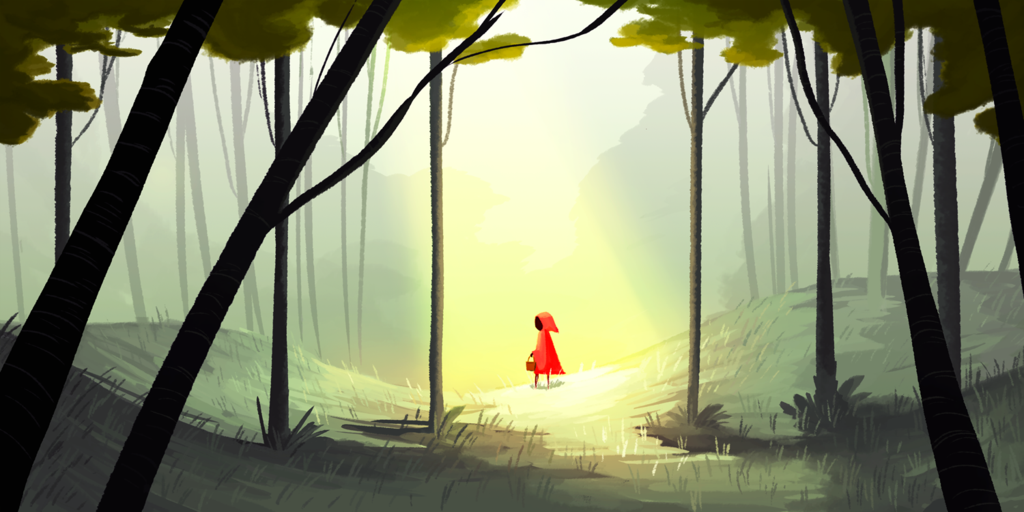
Seriously, just do not talk to strangers!
I have always been very curious about the original Grimm stories. Being a huge fan of all things magic, royal, and fairy like, I usually stayed away, however Jacob and Wilhem Grimm’s, “Little Red Cap” made me very excited to go and read other spooky fairy tales for Halloween season. But wow, I thought the Grimm stories were going to be scary, this was clearly before I read the Italian/Austrian version of Little Red. In Grimm’s version, I liked the protective element of the grandma, where she saves the day and protects her granddaughter even after he returns.
In the Italian and Austrian version of Little Red Riding Hood, it is an ogre instead of a wolf. In my opinion, an ogre is so so so much scarier than a wolf. Using an actual monster (sorry Shrek), immediately makes the story scarier. Suddenly, after the writer talks of Little Red picking flowers in beautiful fields, the reader is lead to the grandmother’s house where the ogre has not only eaten her, but put her non-digestible body parts and some blood in the cupboard, as well as using her intestines for a lock. The author actually has Little Red Hat touch her grandmas intestine to come inside the home. An ogre with opposable thumbs can definitely do more damage in comparison to a wolf, I suppose. The Ogre proceeds to pretend that he is the grandmother, while forcing Little Red Cap to eat her grandmother’s remains. Yikes, wow, dark, jeez! The story concludes with the little girl undressing, climbing into bed with the ogre, and sadly being eaten (hopefully only eaten). I believe that the moral of this story is for children never to divulge any information to strangers. Sadly, all of this happened to Little Red because casually she shared where her grandma lived. This is a very bleak version of the story written in 1867, not too long after Grimm’s version around 1812. This little girl went through real trauma before her murder. She was forced into cannibalism and lead into a bed nude. I am sure this was originally a fairytale meant to keep children safe, because if not cautious, THE WORST kinds of things could happen to them or their grandma. The real human struggles that this addresses is placing trust in strangers and the need to recognize one’s surroundings and to know when they are not safe.
In the True History of the Little Golden Hood by Charles Marelles, I love that Little Golden Hood was finally given a name, “Blachette”. In this story, Blanchette is much too sharing with strangers. Her struggle is too much honesty and trust in others. Blanchette’s grandmother kept her safe by giving her a magic cape, so when the wolf went to bite he only ate the material and boom, immediate pain on that evil wolf. Luckily Grandma comes in to rescue her granddaughter. The story ends with Little Hood being scolded by her mother, “Blanchette promised over and over again that she would never more stop to listen to a wolf”.
Overall, little girls need to be overly cautious near strangers in our society. Each Little Red Riding Hood story urges children to not talk to strangers, and stay on the right path. Cultivating observation skills would have saved Little Red from many of her tragic outcomes. It is important to always be cautious and to go with an instinct if you ever feel unsafe. Fairytales can create that conversation that needs to occur in every family.


